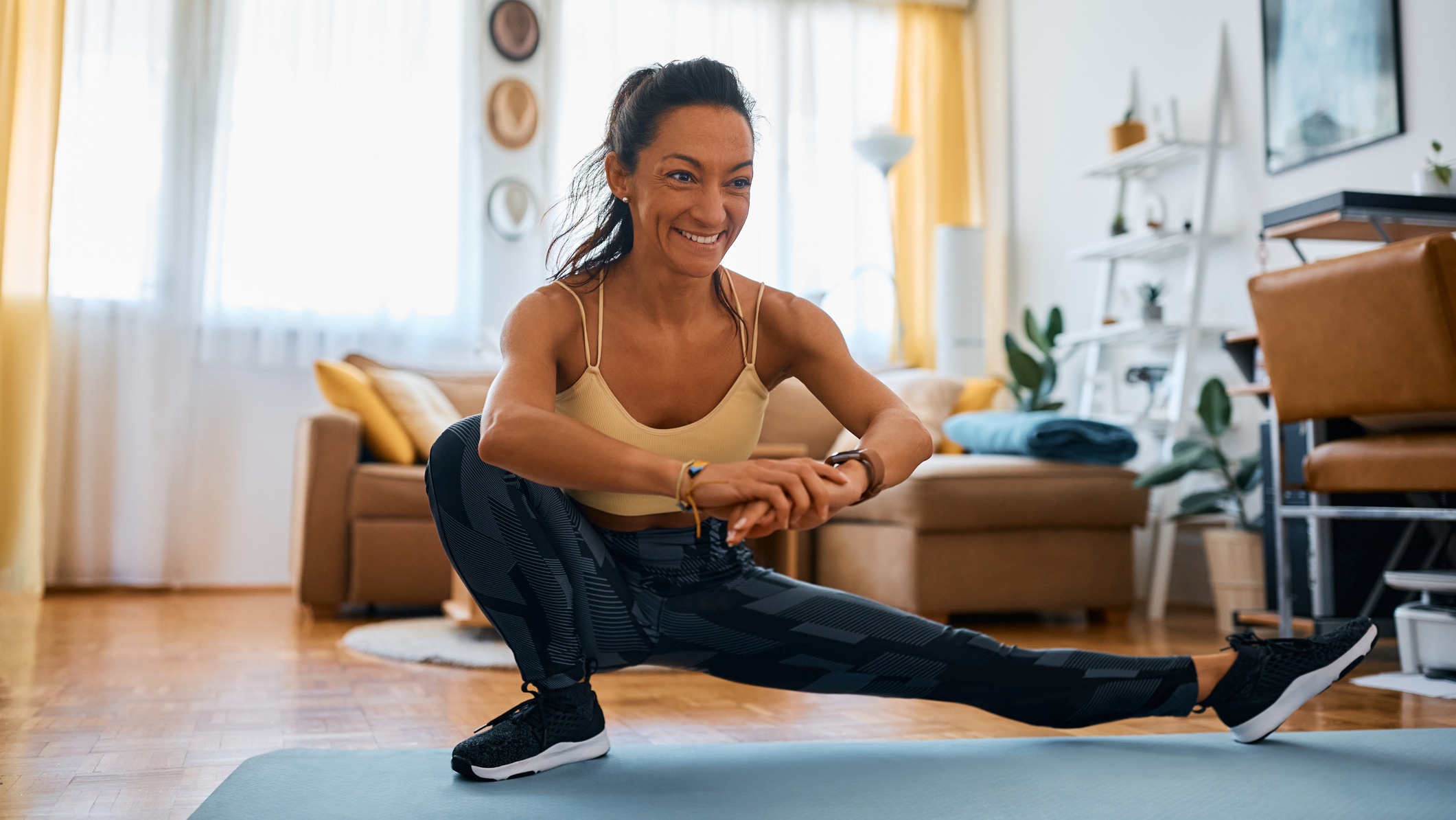An Expert Physio Recommends This Exercise To Develop Lower-Body Strength And Mobility
It’s a great exercise but it’s not easy to pull off—start with these regressions

There are so many different exercises to choose from, it can be difficult to know which movements to spend your limited training time on.
That’s why I was intrigued by physiotherapist Sam Caddick’s ringing endorsement of the Cossack squat in a recent Instagram post, so I spoke to him to find out more.
According to Caddick, the Cossack squat is one of the best tests of strength and mobility, as it recruits a wide range of lower-body joints and muscles.
“The reason why I love this drill so much is because it brings in the four mechanics of the lower body,” says Caddick. “These are ankle mobility (dorsiflexion), knee flexion—driving the knee over the toe—as well as working into a deep hip-flexed position and working through the adductors, testing the groin strength and length.
“It’s also a great way of working through the lateral movement pattern, so left to right.”
What’s more, it's also a unilateral exercise, which means you’ll be working on one leg at a time, ensuring both are equally as strong and mobile.
So what’s stopping you from adding it to your leg workouts? Probably the fact that it requires greater mobility than many of us possess, which is why Caddick’s Instagram post is so helpful. Watch him demonstrate several regressions to help you get started.
Get the Coach Newsletter
Sign up for workout ideas, training advice, reviews of the latest gear and more.
A post shared by Sam Caddick | Rehab | Running | Performance | Mobility (@sjc.physio)
A photo posted by on
“To regress the drill, use a band strapped around something [such as a squat rack] to lean back on so you're able to get further and deeper into the motion,” says Caddick. “You can always use your hands to support you on a block to help you get further into the position. Or use a weight as counterbalance which should reposition the torso so you’re able to get deeper into the stretch.”
If you have limited ankle mobility, Caddick recommends raising one heel on a wedge or a block, so you can move deeper into the exercise.
Once the movement comes easily, Caddick has also provided progressions too. “You can straddle wider and you can add additional load in the form of a kettlebell or a dumbbell and hold it in a front-loaded position at the chest.”

Alice Porter is a journalist who covers health, fitness and wellbeing, among other topics, for titles including Stylist, Fit & Well, Glamour, Cosmopolitan, Grazia, VICE and Refinery29. When she’s not writing about these topics, you can probably find her at her local CrossFit box.









